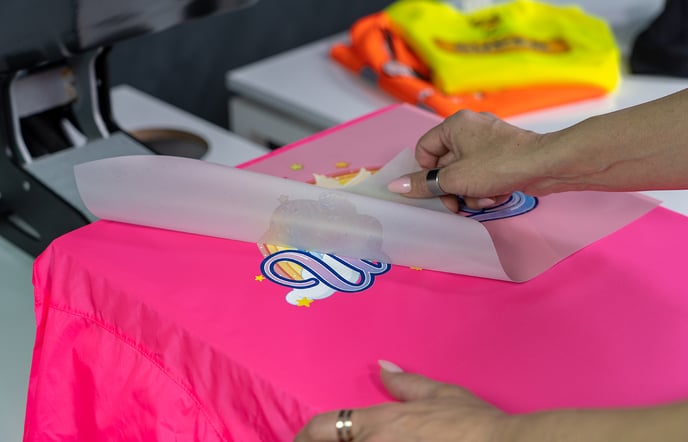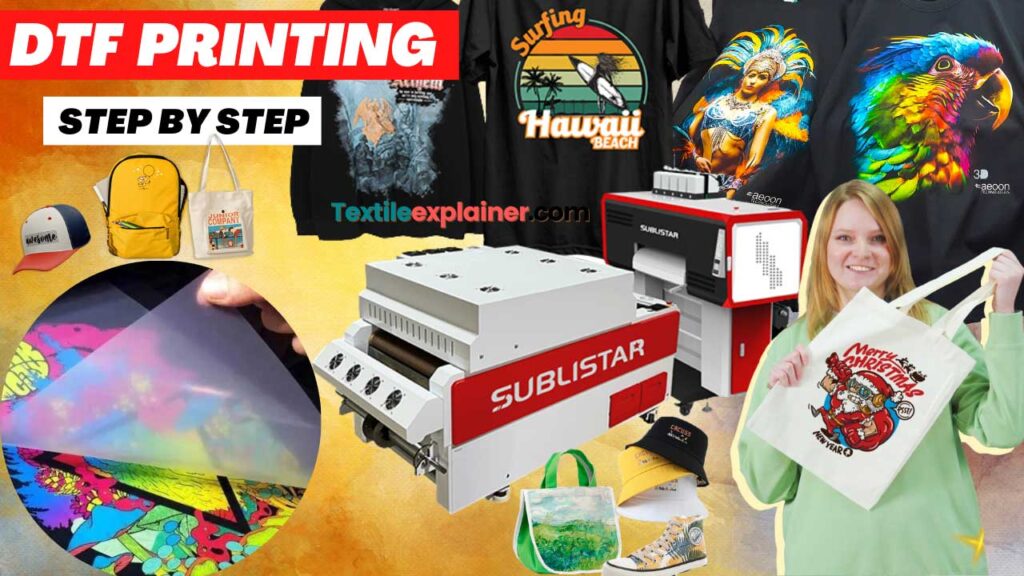Grasping DTF Printing: Advice for Achieving Vibrant and Long Lasting Prints
In the world of textile printing, accomplishing durable and dynamic prints is a sought after ability that can elevate the quality of your outcome. From selecting the right products to make improvements print settings and perfecting post-printing completing strategies, there are many factors that can affect the end result of your prints.

DTF Printing Fundamentals
For those brand-new to the globe of fabric printing, recognizing the principles of DTF printing is necessary to understanding this ingenious technique. Direct to Movie (DTF) printing is a contemporary approach that includes transferring designs from an unique film onto various fabrics utilizing a heat press. Unlike traditional methods like display printing, DTF provides advantages such as vivid colors, intricate describing, and the capability to print on diverse materials like cotton, polyester, and blends.
The procedure begins by publishing the style on a special DTF movie using a suitable printer with CMYK or CMYKW ink sets. As soon as the style is published, it is then cured with a warm press to create a lasting and durable print. DTF printing is recognized for its ability to duplicate complex layouts with high precision and shade precision, making it a prominent choice for services looking to produce custom clothing, advertising items, and extra.
Selecting the Right Products

The glue powder acts as a bonding agent between the published style and the fabric, so it must have solid bond buildings to make certain a long-lasting and sturdy transfer. By thoroughly choosing the appropriate materials for DTF printing, printers can enhance the high quality, vibrancy, and longevity of their prints.
Maximizing Publish Settings
When aiming to achieve the very best cause DTF printing, precise focus to enhancing print setups is vital for guaranteeing specific and high-grade transfers onto textiles. When optimizing print settings is the resolution, one essential facet to think about. Greater resolutions usually cause sharper and much more in-depth prints, enhancing the general top quality of the transfer. In addition, readjusting the ink thickness can assist ensure and attain vivid shades that the design sticks out on the fabric.
While raising the rate can boost effectiveness, it might jeopardize the final print's clarity and shade saturation. Experimenting with different speeds and observing the outcomes can aid figure out the ideal setting for each print job.
Furthermore, make improvements shade accounts and making sure appropriate color monitoring are crucial for attaining consistent and exact shades across various prints. By adjusting color setups and accounts, printers can reduce shade inconsistencies and create uniform outcomes, improving the overall print top quality and client fulfillment.
Preparing Artwork for DTF Printing
To make certain ideal results in DTF printing, thorough interest to information is necessary when preparing artwork for transfer onto fabrics. Begin by selecting high-resolution photos to preserve quality and sharpness in the final print. Vector graphics are favored as they can be quickly scaled without shedding high quality. Transform the artwork to CMYK shade mode to make sure that the colors equate precisely from display to print. Change the color degrees and contrast as required to enhance the vibrancy of the style. When adding message to the artwork, pick font styles that are readable and ideal for the designated size. Keep in mind to mirror the last design prior to publishing to make sure that it moves correctly onto the garment. Additionally, think about the fabric kind and color when choosing the art work, as these variables can affect the last appearance. By complying with these actions and paying very close attention to the details, you can prepare artwork that is maximized for vibrant and resilient DTF prints.
Post-Printing Finishing Methods
Executing effective post-printing finishing strategies is critical to improving the toughness and visual appeal of DTF prints on textiles. As soon as the printing procedure is total, applying warmth to the published design is essential.
After warmth pushing, peeling the pet dog film thoroughly is an important step. This procedure must be done slowly and continuously to stop why not check here any type of damages to the print. As soon as the film is gotten rid of, the print may call for extra curing time to better set the ink right into the material. This step aids enhance the washability and durability of the print, guaranteeing it can withstand numerous wash cycles without fading or fracturing.
Additionally, trimming any kind of excess film around the style can provide the last print a professional and tidy appearance. Making the effort to correctly end up DTF prints post-printing can substantially influence the overall high quality and long life of the textile style.

Final Thought
In verdict, mastering DTF printing needs a thorough understanding of site link the basics, choosing suitable products, optimizing print settings, preparing artwork successfully, and making use of post-printing ending up techniques. By following these ideas and techniques, one can accomplish durable and vibrant prints that meet their desired quality requirements. Constant technique and focus to information are essential in achieving successful outcomes in DTF printing.
From selecting the right materials to fine-tuning print setups and perfecting post-printing finishing methods, there are various elements that can influence the outcome of your prints. Unlike traditional approaches like display printing, DTF uses benefits such as dynamic colors, complex outlining, and the capability to print on varied products like cotton, polyester, and blends.
When the style is printed, it is after that healed with a heat press to create a resilient and resilient print.When intending to attain the finest results in DTF printing, meticulous focus to enhancing print setups is critical for making certain premium and find this accurate transfers onto fabrics.In final thought, mastering DTF printing calls for a complete understanding of the fundamentals, choosing appropriate products, optimizing print setups, preparing artwork properly, and using post-printing ending up methods.